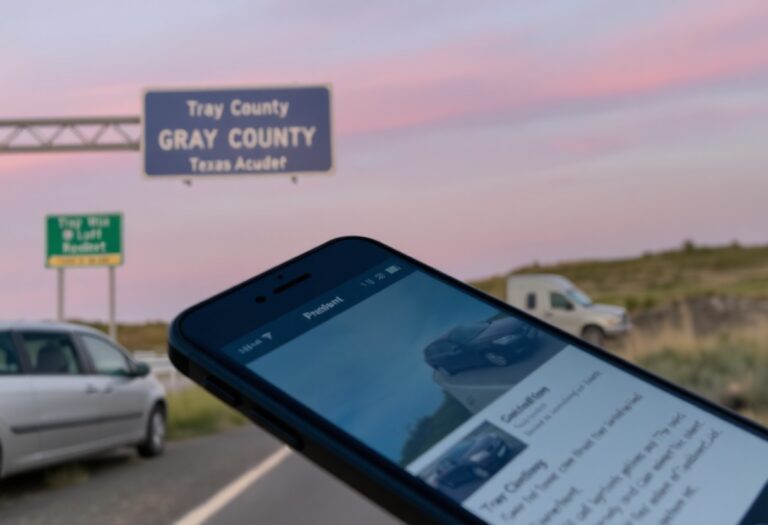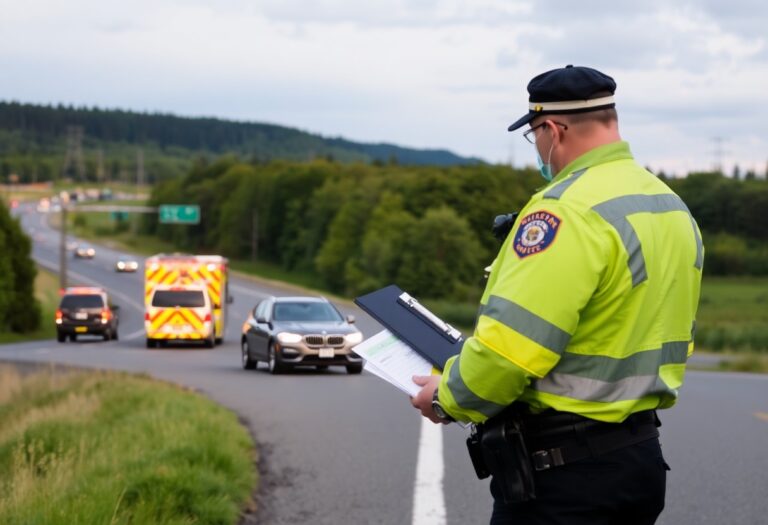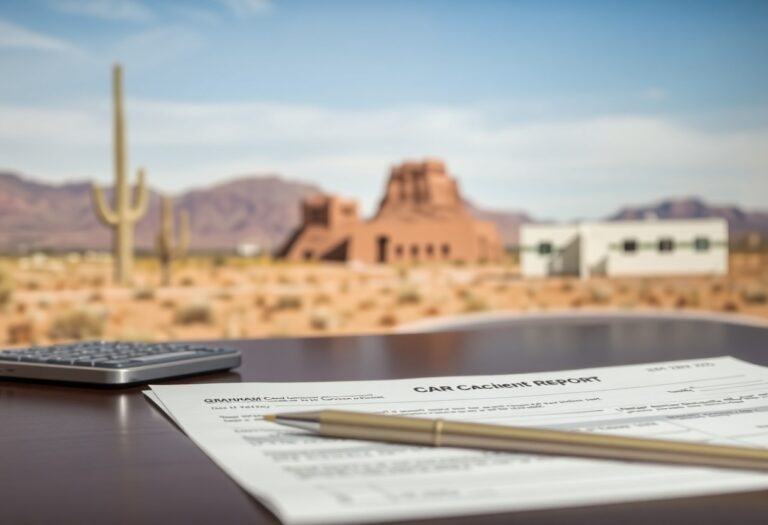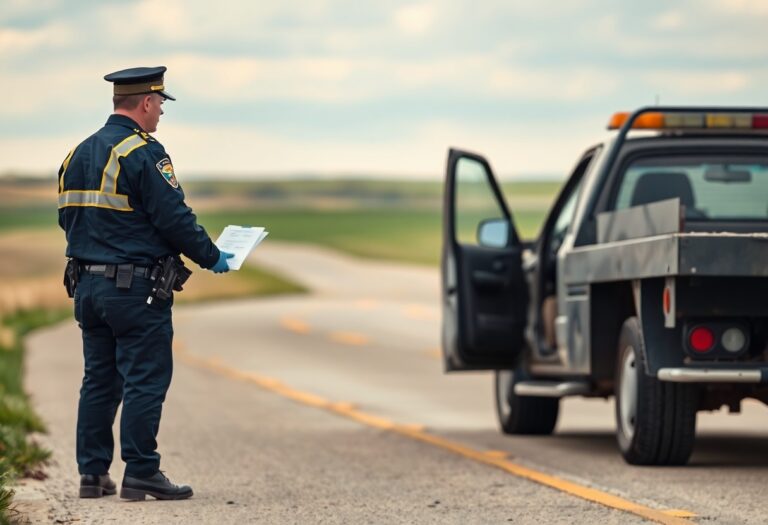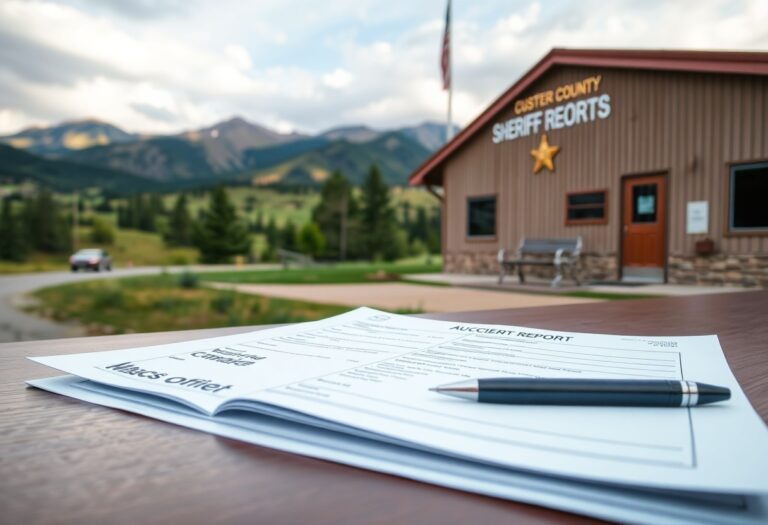Unlocking Access: Your Crash Report Retrieval Journey Begins
Accessing your crash report can feel daunting, but the process is streamlined for your convenience. Start by visiting the official New Jersey State Police website, where a dedicated section for crash reports guides you through the steps. Have your details handy, such as the report number, date of the incident, and your personal information. If you prefer a physical copy, your local police department can help, but be prepared for potential delays. Generally, crash reports are available online within 7 to 14 days post-incident, ensuring you won’t have to wait long for crucial documentation.
Identifying the Right Channels for Your Request
Finding the right avenues to obtain your crash report is imperative for a speedy retrieval process. Ensure you’re utilizing the official resources available, and don’t overlook your local law enforcement agencies, as they play a significant role in this process. Knowing which specific departments to contact can save you valuable time and help you navigate through potential bureaucratic challenges.
Official State Resources
The New Jersey Division of State Police provides a straightforward platform for accessing crash reports. You can visit their website to find the electronic form needed to formally request your report. It’s advisable to have your accident details ready, such as the date, location, and involved parties, to ensure an efficient request process.
Local Law Enforcement Agencies
Your local police department or sheriff’s office can also supply valuable crash report information. Frequently, the reports are filed and maintained by the agency that responded to the accident. This means you’ll likely need to contact the specific agency responsible for your case to obtain the report.
Each local law enforcement agency may have its own procedure for report retrieval, including different fees or required forms. For instance, Sussex County has multiple police departments, including Newton and Hopatcong police, each with distinct processes. It’s beneficial to visit their respective websites or call them directly for the most accurate and specific instructions tailored to your needs.
Navigating Digital Platforms: A Step-by-Step Guide
| Step | Description |
| 1 | Visit the official state website or designated crash report portal. |
| 2 | Enter your crash report details such as the date, location, and parties involved. |
| 3 | Pay any applicable fees using secure online payment methods. |
| 4 | Download or print your crash report upon confirmation of your request. |
Online Portals and Services
Engaging with online portals simplifies crash report retrieval significantly. The New Jersey State Police and various county police departments operate user-friendly platforms where you can locate your crash report. Typically, you will need basic information such as the crash date and your driver’s license number to access the report. Each portal offers clear instructions and often features customer support if you encounter issues navigating the site.
Mobile Applications for Instant Access
The rise of mobile technology allows you to access crash reports directly through dedicated applications. These apps can streamline the entire process by allowing you to submit requests on-the-go and receive instant notifications when your report is available. In Sussex County, look for local law enforcement apps that link to crash report databases for the most efficient experience.
Mobile applications enhance convenience by reducing the time spent waiting for reports. Available for both Android and iOS, these tools often offer additional features such as accident scene documentation, direct communication with law enforcement, and reminders for filing claims with insurance companies. By enabling quick access to your crash report, they empower you to handle the aftermath of an accident with greater efficiency.
Key Information You’ll Need
Before retrieving your crash report, gather specific information to ensure a smooth process. You’ll need details like the date of the accident, the location, and the names of those involved. This information will help you efficiently navigate the system and avoid delays in obtaining the report you need.
Essential Details to Gather
Collect vital data from the scene of the incident, such as the date and time of the crash, the specific location, the involved parties’ names, and their respective vehicle identification numbers (VIN). Having these details at hand will significantly speed up the retrieval process.
Understanding Request Forms and Fees
Familiarize yourself with the applicable request forms for obtaining your crash report and any associated fees. Most often, there’s a nominal fee for the report, usually around $5 to $15, depending on the jurisdiction. Ensure you fill out the request form accurately to avoid unnecessary delays.
Different offices may have varied forms, so check if you need a specific format. You can often find downloadable forms on the official state website or request them directly from the local police department. Commonly, you may submit payment via check or credit card, so keep your payment method in mind. Being equipped with the right form and payment will streamline your experience, allowing you to focus on retrieving your crash report without complications.
Troubleshooting Common Roadblocks
If you encounter challenges during your attempt to retrieve a crash report, a few common issues come into play. Inaccessibility of reports, incorrect identification details, or delays in processing can hinder your retrieval efforts. Addressing these obstacles promptly can save you time and frustration. You have the option to reach out to local authorities or online resources to overcome these hurdles efficiently.
When Reports Are Inaccessible
Sometimes, accessing your crash report may be impossible due to technical difficulties or the report not yet being filed. In these situations, you can check back after a few days or visit the appropriate law enforcement agency’s office for further assistance.
Tips for Resubmission and Follow-Ups
For a successful resubmission, ensure that all information is accurate, including your accident details and personal identification. If you need to follow up, give it approximately 5 to 10 business days before making contact, allowing them time to process your request. Consistent communication can help you stay informed about your report’s status.
- Verify report details carefully before submission.
- Contact law enforcement agencies for inaccessible reports.
- Keep lines of communication open for timely updates.
- Any additional inquiries or resubmissions should be made promptly.
If you’re resubmitting a request, double-check details such as the report number and date of the incident. Keeping records of all interactions with authorities is beneficial, as it provides context for your follow-ups. Consistent checking of status updates can also decrease wait times in retrieval.
- Document all communication regarding your crash report.
- Be proactive about follow-ups if issues arise.
- Utilize online resources to expedite the process.
- Any delays should be addressed swiftly to avoid further complications.
What to Expect After Submission
Upon submitting your request for a crash report, you can typically expect a confirmation email outlining the details of your request. This email will serve as a reference for tracking the status of your report. Usually, you might also receive notifications regarding any delays or issues that arise during the processing. It’s a straightforward process, providing you with peace of mind as you await your important documentation.
Average Processing Times
Processing times for crash reports can vary, but on average, you should anticipate a window of 3 to 5 business days for completion. If your request coincides with holidays or weekends, this may extend slightly. Most platforms aim to minimize wait times, but it’s wise to check for any specific timelines indicated during your submission.
Analyzing Your Retrieved Report
Once you have access to your crash report, the next step involves a thorough analysis of its contents. This report typically includes vital details such as the accident’s date, location, involved parties, and any insurance information. Understanding these elements can empower you, especially if you need to file a claim or seek legal advice.
Pay attention to any discrepancies in the report, such as inaccuracies in vehicle details or witness statements. Correcting these issues promptly is vital as they can impact insurance claims or legal proceedings. Look for diagrams that illustrate the incident’s specifics and note any police statements. Familiarizing yourself with the legal jargon present in the report can also be beneficial, as it helps you understand the terminology used by law enforcement and insurance companies.
Conclusion
Hence, retrieving your crash report in Sussex County, New Jersey, is a straightforward process. By knowing where to go—whether online or at your local police department—you can obtain the necessary documentation quickly. Be sure to have all pertinent information such as the date and location of the incident on hand, which will streamline your search and provide you with the information you need promptly.







